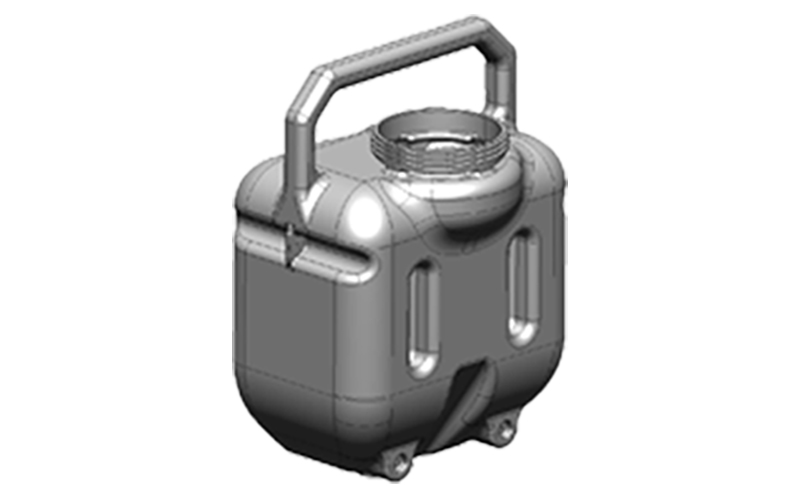What are the Kiss-off Ribs and Discrete Ribs in Rotational Molding
 Mar 30,2024
Mar 30,2024

What are the Kiss-off Ribs and Discrete Ribs in Rotational Molding?
In rotational molding, ribs are commonly used to enhance the structural integrity and durability of the products. There are two primary types of ribs: kiss-off ribs and discrete. This article will explain what kiss-off and discrete ribs are and their significance in rotational molding.
1. Kiss-off Ribs
Kiss-off ribs, also known as interlocking ribs, are designed to overlap or interlock with each other. This interlocking mechanism provides a strong and rigid structure, effectively distributing the applied forces across the entire product. Kiss-off ribs are typically used in applications requiring high bending and torsional stiffness, such as large storage tanks or containers. The overlapping nature of kissed ribs ensures a strong load-bearing capability and enhances the overall structural performance of the product.

2. Discrete Ribs
Discrete ribs, also known as standalone ribs, are structural elements that are placed close to each other but do not necessarily overlap or interlock. They are typically used in applications where high bending and torsional stiffness are required, but the use of kiss-off ribs may be impractical due to product geometry or aesthetics. Discrete ribs provide effective load distribution and enhance the product's ability to withstand mechanical stresses. They can be placed strategically in areas of expected high stress to improve the product's structural performance.
3. Differences Between Kiss-off ribs and Discrete Ribs
The primary difference between kissed and discrete ribs lies in their interaction and connection. Kiss-off ribs are designed to overlap or interlock with each other, creating a stronger and more rigid structure. Discrete ribs, on the other hand, are placed close to each other but do not necessarily overlap or interlock.
4. Application Considerations
The choice between kiss-off and discrete ribs depends on the specific application and loading conditions. Kiss-off ribs are generally more effective for applications requiring high bending and torsional stiffness, such as large tanks or containers. Discrete ribs are suitable for applications with similar requirements but may be more suitable when the use of kiss-off ribs is impractical due to product geometry or aesthetics.
5. Design Considerations
When designing kiss-off and discrete ribs, several factors must be taken into account. These include the rib shape, size, orientation, and spacing. The shape and size of the ribs should be optimized to withstand the expected loading conditions. The orientation of ribs should align with the predominant loading directions. The spacing between ribs should be carefully considered to ensure effective load distribution and balance structural performance with material costs and weight.
6. Material Considerations
The choice of plastic material and its properties should also be considered when designing kiss-off and discrete ribs. Some materials may require larger or fewer ribs to achieve the desired structural performance. It is essential to select a material that can withstand the expected loading conditions and maintain the structural integrity of the product.
The choice between kiss-off and discrete ribs depends on the specific application and loading conditions, as well as product geometry and aesthetics. Proper design considerations, such as rib shape, size, orientation, and spacing, must be taken into account to achieve optimal structural performance.
 Tel: 0086-13632687993
Tel: 0086-13632687993  Email: roto@lightvenus.com
Email: roto@lightvenus.com

 Home
Home Rotational Molding Opens Up New Avenues for Creating Smart Robotics Housings
Rotational Molding Opens Up New Avenues for Creating Smart Robotics Housings  You May Also Like
You May Also Like



 Tel
Tel
 Email
Email
 Address
Address








